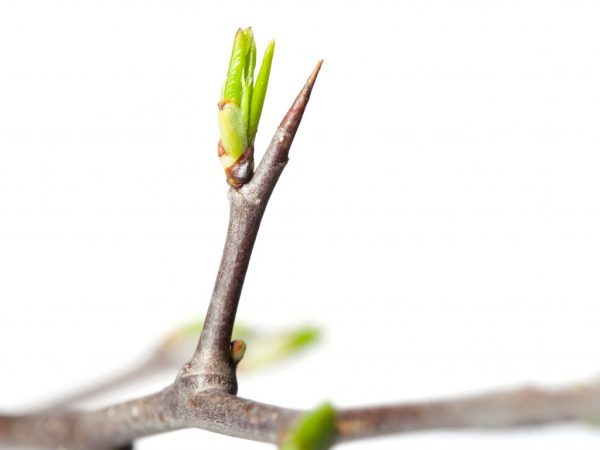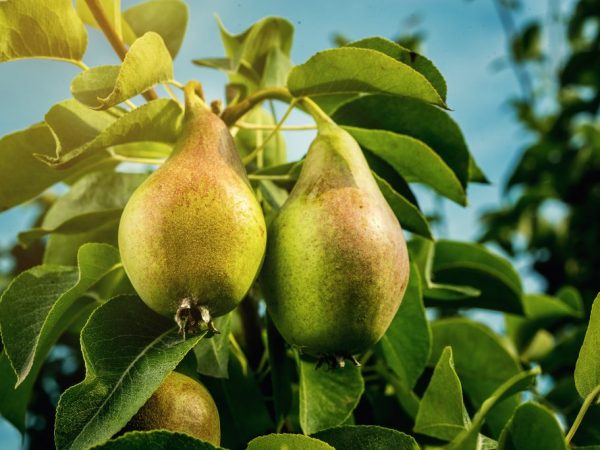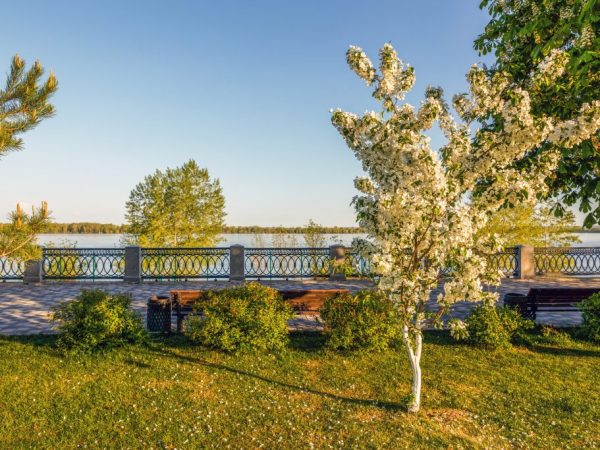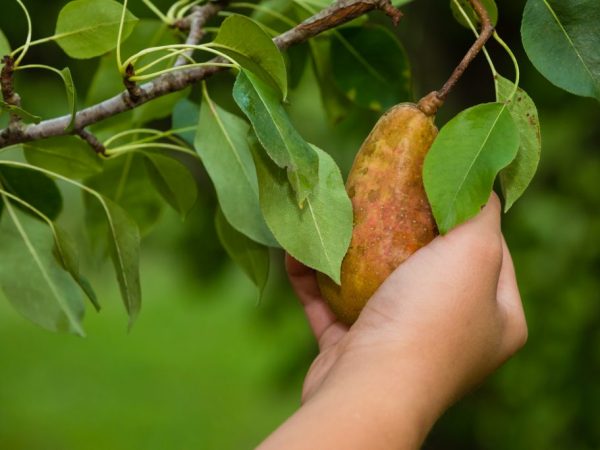Rules and timing for planting pears
The pear is famous for its delicious, juicy and healthy fruits. Planting pears in open ground is done in a certain way.
- Choosing a seat for landing
- Soil composition
- Pollination
- Planting pit preparation
- Organic bookmark
- Adding mineral fertilizers
- The choice of planting material
- Landing features
- Further care
- Harvesting
- Planting cuttings
- Procurement of planting material
- Landing in the ground
- Planting care
- Transfer
- Another way of grafting
- Care
- Conclusion

Rules and timing for planting pears
Choosing a seat for landing
You need to choose the right place for planting pears. An adult pear is not transplanted because it may die.
The planting of seedlings is carried out on a flat area where groundwater is deeply buried. The place must be well lit by the sun for a healthy tree to grow with a good harvest.
It takes time for the fruits to ripen, depending on the climatic conditions and the plant variety:
- for early varieties - at least 3 months;
- for medium - 3-3.5 months;
- for late maturing - 3.5-4 months.
This rule is valid provided that the summer is warm. The optimum temperature is 15-20 ° C.
Correctly plant the pear in the spring in a windless area. The tree can withstand frosts down to -25 ° C, provided that the weather is calm outside.
Soil composition
It is recommended to plant pears in light, loose and permeable soil. It should be fertile land, rich in organic matter and minerals.
Landings should be located at a distance of 3 m from outbuildings. So as it grows, the root system of adult trees will be able to fully develop.
Pollination
The rules for growing pears suggest their placement on the site between other fruit trees. This will provide them with good pollination and a bountiful harvest.
Planting pit preparation

Good harvest when properly planted
After the site is selected, they move on to the question of how to plant a pear correctly.
For planting, a pit 1 m deep and 80 cm wide is required. In such a space, the root system will fully develop. The correct depth for planting pears is determined by taking into account the length of the roots of the seedlings: when planting, the roots must be fully straightened.
Organic bookmark
Before planting the plant, fertilize the planting hole. From 3 to 5 buckets of compost or rotted manure are poured into it, depending on the size of the planting pit.
Adding mineral fertilizers
For these trees, organic matter alone is not enough, therefore, in addition to compost (manure), mineral fertilizers are poured into the pit.
You can prepare a mixture from the following ingredients:
- sand - 2 buckets;
- phosphate fertilizers - 200 g;
- the drug Agricola - 30 g;
- potash fertilizers - 60 g.
All ingredients are blended and mixed with dug garden soil. The resulting mixture is filled into a pit. Also, 2 buckets of water are poured into the dug hole. In the process of watering with water, add a solution of dolomite flour (600 g per 10 l of water). This substance is an excellent soil deoxidizer.
After watering, the pit is left for 2-3 weeks. During this time, the earth will settle, and the nutrients will completely dissolve. This will eliminate the risk of root burns.
Before planting pears, the pits are watered with Kornerost solution. The proportions are as follows: 3 tablets of the substance per 10 liters of water.
The choice of planting material
Currently, there is a wide variety of varieties. Most popular pears:
- Larinskaya;
- Bergamot;
- Children's;
- Seedless;
- Veles;
- Honey;
- Moscow;
- November;
- Forest beauty, etc.
Each variety has its own ripening period and fruit flavor. To grow a healthy and richly fruitful garden, it is important to choose the right cultivar.
They choose seedlings grown in nurseries or sold in the garden market. They are carefully examined for damage and disease. During the inspection, you must not touch the roots: they are saturated with substances for the further growth of the tree.
In order for the pears to adapt easily after planting, the planting pit is sprayed with a root growth stimulant. For this, the drug "Kornevin" is suitable.
Landing features

You need to plant a pear according to all the rules
Planting seedlings outdoors is an important step in growing. Step-by-step instructions for planting trees are as follows.
It is necessary to plant a pear in the spring when the heat stabilizes and the threat of the last spring frosts has passed. In the middle lane, pears are planted in the middle or end of April. In the regions of the southern strip - in late March and early April. In any case, planting a pear is carried out before the beginning of the swelling and blooming of vegetative buds.
A stake is driven in the center of the planting pit, which serves as a support for a young tree. The stake should rise 50-70 cm above the soil surface. After that, a mound is poured in the center of the hole. A seedling is placed on top of the mound and its roots are straightened. From above, the root system is covered with earth so that the root collar is at a height of 5-7 cm from the soil surface.
When planting, the pear is shaken so that the soil lies evenly and fills the voids between the roots. The plantings are slightly trampled down, sprinkled with a thin layer of humus to prevent moisture evaporation.
Further care
Care consists in timely watering, competent crown formation, regular loosening of the soil and timely removal of weeds. The first procedure increases the moisture and air permeability of the soil, the second protects against the invasion of parasites, for example, aphids. This pest especially loves to feast on the juice of young foliage of seedlings and causes diseases in trees.
In the first years of life, young plantations on the site do not need fertilization, quite sufficient fertilizing made when planting a pear tree. Care consists in timely watering. It is important not to allow the soil to dry out, otherwise the young plant will lag behind in growth or bear fruit with small and tasteless fruits.
With the onset of deep autumn, tree trunks are covered with spruce branches to the first lower branch of the tree. This protection protects young seedlings from freezing and cold winds.
Harvesting
It is important not only to plant the pear tree correctly, but also to harvest on time. The ripeness of the fruit is determined by the variety. When the pears reached the desired size and yellowness appeared in the places where the stalks were attached, it was time to harvest.
If some of the fruits are still green, do not worry: they will ripen quickly in a warm place. Overripe fruits lose their juiciness and aroma.
Summer pears are picked about a week before ripening. It is during this time that they will ripen and will be suitable for consumption. Mid-season (autumn) varieties are removed in September, and only after a month they will reach the required maturity and juiciness. Harvesting of late (winter) pears is carried out before the onset of the first frost. Such fruits are notable for their firmness and astringency, but at room temperature they quickly reach and gain the necessary taste.
Planting cuttings

Cuttings should have healthy leaves
One of the easiest and most effective ways to get new pear trees is to plant cuttings.The main advantage of a new tree obtained in this way is the preservation of all varietal characteristics of the parent specimen and rapid fruiting (after about 2-3 years).
Procurement of planting material
For the middle, southern strip and northern regions, there are different periods for harvesting cuttings in the summer. In the middle lane, they are cut in the second decade of July, in the south - at the end of July or early August, and in the north - at the end of June.
To obtain a young tree, cuttings that are well ripened with a lignified vine are used. It is important that the shoots are healthy and fruitful.
The leaves on the branches should be open, except for the topmost one.
Cuttings are cut early in the morning. At this time, they contain a lot of moisture. The lower cut is made obliquely towards the kidney, the upper cut horizontally above the eye. Each piece should have 2 internodes and 1-2 pairs of leaves. Cut cuttings are placed in a container with water, covered with transparent polyethylene. To accelerate the formation of roots, the drug "Kornevin" is added to the water.
Landing in the ground
After a few days, the cuttings are planted in seedling boxes. The bottom of the container is filled with nutrient soil, consisting of black soil and organic matter. Upstairs there is a layer of hot sand - 5 cm. The sand is poured with water with the addition of Kornevin.
The optimum planting depth of cuttings is 1.5 cm. The distance between pear plantings is 10-15 cm. If pear cuttings are planted close to each other, they will not be able to fully develop and grow the root system. Some gardeners plant plants in pairs in one seed pot.
The planted cuttings are covered with transparent plastic to create a greenhouse environment.
Planting care
The main care for the planted shoots is periodic ventilation, providing good lighting without direct sunlight. They also need periodic watering. To prevent churning of the soil, the plants are watered by irrigation from a spray bottle.
Decaying leaves are removed, because they can lead to rotting of the trunk and the death of cuttings.
After the appearance of the first roots - after about 1-1.5 months - the seedlings are regularly ventilated in order to adapt them to the new temperature regime.
Transfer
Transplanting young plants to a new place in the garden is carried out in early autumn. The boxes, along with the cuttings, are dug into the ground. With the onset of cold weather, they are insulated with improvised material: spruce branches, needles, sawdust - in order to protect them from winter frosts.
In the spring, as soon as the heat stabilizes, the seedlings are transplanted to a previously prepared garden bed in the open field.
It is possible to transplant young seedlings to a new and permanent habitat only after a year.
Another way of grafting
The cut and prepared stalk is dipped in a glass bottle filled with water. In this case, the foliage should not come into contact with water, otherwise the cutting will rot. The neck of the container is sealed with garden varnish and the bottle is dropped into the ground so that the edge of the neck is 15-20 cm underground.
The sprout immersed in the water is cut off, only 3 eyes are left on it, which are above the soil surface. The twig is covered with a transparent film, periodically ventilated and moistened. After a while, it releases the roots directly into the soil around the bottle.
You can transplant a finished seedling to a new place after it reaches 2 years of age. In the cold season, it is protected with any covering material.
Care
After successful survival, the seedlings need good care. For young plants, abundant watering is important.
For a two-year-old pear, regular fertilizing with mineral and nitrogen fertilizers is carried out: at the beginning of the growing season, at the stage of the appearance of ovaries and after harvesting.
Conclusion
Planting pears in the garden involves the selection of a site with nutritious soil, timely planting, regular fertilization and watering.Only under such conditions will the garden please with a healthy, tasty and juicy harvest.


